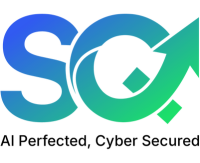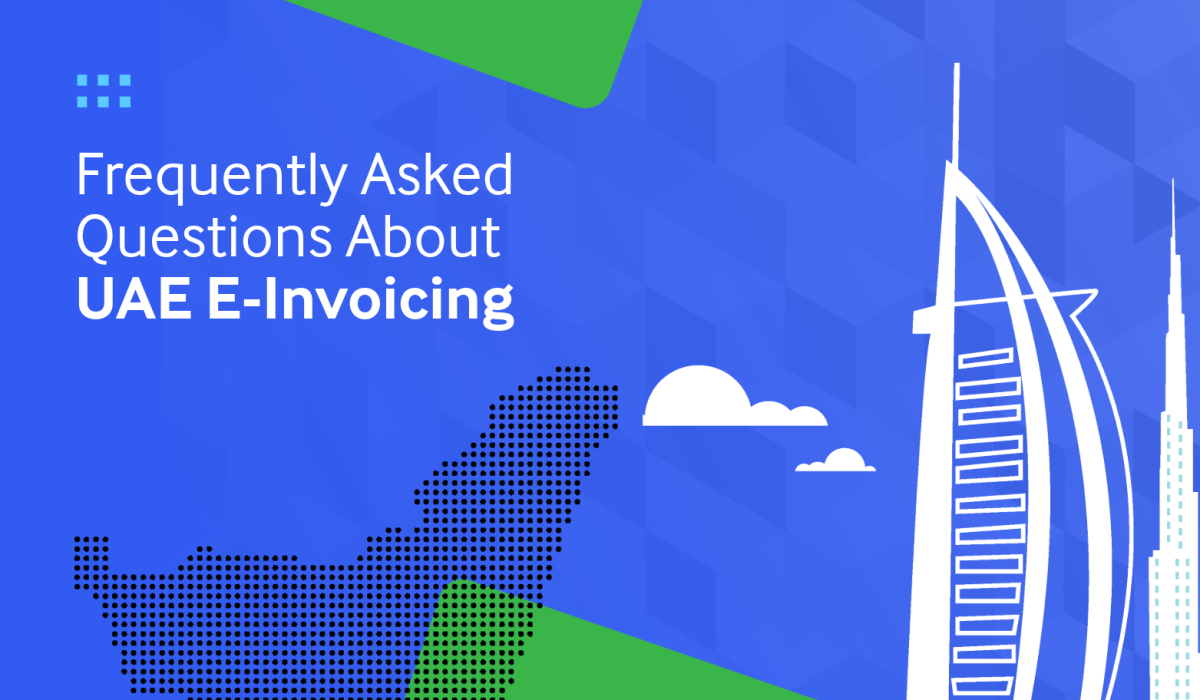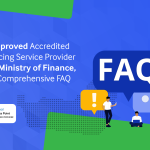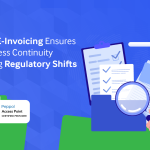E-Invoicing in the UAE is more than just a regulatory step—it’s a move towards smarter, automated business operations. By digitizing invoices, companies gain better accuracy, faster processing, and stronger compliance with FTA standards. Whether you’re a large enterprise or a growing business, adopting the right e-invoicing software in UAE helps you stay ahead of compliance requirements while simplifying daily operations.
In these FAQs, we’ve compiled the most common questions on UAE e-Invoicing—covering compliance steps, automation, ERP integration, and why platforms like SMARTeIS are trusted by businesses across industries.
1. What are Tax Transformation Compliance Solutions?
Tax Transformation Compliance Solutions are comprehensive tools that help businesses adapt to new tax frameworks and remain compliant. These solutions automate manual tasks, reduce human error, and streamline reporting to regulatory authorities.
2. What is UAE e-Invoicing?
UAE e-Invoicing is a system mandated by the Federal Tax Authority (FTA) for businesses to generate and exchange invoices electronically. It replaces traditional paper or PDF invoices with structured digital formats. This ensures higher transparency, faster validation, and regulatory compliance.
3. What is an e-Invoice in UAE?
An e-Invoice is a digitally generated invoice in a machine-readable format approved by UAE authorities.
4. From when is e-Invoicing mandatory in the UAE?
In the UAE, e-Invoicing will be introduced in phases. The process begins with a pilot program on July 1, 2026, followed by the first mandatory phase on January 1, 2027, for businesses with annual revenues of AED 50 million or more. Companies with revenues below AED 50 million will be required to comply starting July 1, 2027. This phased rollout applies to both business-to-business (B2B) and business-to-government (B2G) transactions.
5. What are the prerequisites to generate an e-Invoice?
Businesses need systems capable of generating structured invoice data and meeting FTA guidelines. An integrated ERP or invoicing solution is essential to ensure data consistency. Tools like SMARTeIS by Skill Quotient help businesses achieve these prerequisites without operational hurdles.
6. What is the step-by-step guide to e-Invoicing implementation?
The guide typically includes assessing readiness, integrating ERP/POS systems, standardizing data, testing, and going live. SMARTeIS, a leading e-invoicing software in UAE provides this structured approach to reduce risks during rollout. With expert support, businesses can complete implementation smoothly.
7. What is the specialized e-Invoicing model in the UAE?
The UAE model is built specifically around the country’s VAT and compliance requirements. It ensures invoices follow the mandated structure and are validated through approved platforms. SMARTeIS is designed to align directly with these requirements, ensuring seamless compliance.
8. What challenges are faced during e-Invoicing implementation?
Common challenges include system integration, handling high volumes of invoices, and staff adoption. Data accuracy and meeting strict deadlines can also be hurdles. With automation and expert guidance, these challenges can be effectively minimized.
9. Why should a company choose SMARTeIS for e-Invoicing?
SMARTeIS by SKill Quotient provides a one-stop platform covering compliance, automation, and integration. Its in-house expertise and proven track record make the transition faster and more reliable. This reduces cost, effort, and compliance risks.
10. What does vendor onboarding mean?
Vendor onboarding refers to digitally registering suppliers into a company’s system. It ensures that vendor data is standardized and validated from the start. This creates smoother purchasing workflows and reduces administrative effort.
11. How does purchase digitization benefit businesses?
Purchase digitization transforms paper-based procurement into electronic records. It provides visibility, traceability, and faster processing of purchase transactions. Companies benefit from reduced delays, better control, and improved compliance.
12. What is Purchase Invoice Automation?
Purchase Invoice Automation is the process of digitally capturing, validating, and managing invoices. It reduces dependency on manual verification and speeds up the payable cycle. Businesses can achieve greater accuracy and timely payments.
13. What is Payment Automation?
Payment automation digitizes the end-to-end payment cycle, from approvals to disbursement. It ensures payments are processed securely and on time. Companies benefit from reduced errors, cost savings, and improved vendor satisfaction.
14. What is Purchase Automation?
Purchase automation covers the entire procurement cycle, including requisitions, orders, invoices, and approvals. By digitizing every step, it ensures transparency and efficiency. This also minimizes compliance risks and accelerates business operations.
15. How do automation-enabled processes simplify compliance?
Automation eliminates repetitive manual work and reduces the chances of human error. With real-time validation, businesses can ensure invoices and data meet regulatory requirements. This creates smoother audits and faster reporting.
16. How does SMARTeIS help businesses manage processes with ease?
SMARTeIS provides automation-enabled compliance tools that integrate seamlessly with your existing ERP or financial systems. This allows businesses to focus on growth while minimizing manual intervention, making operations simpler and more reliable.
17. What is the role of automation in tax transformation?
Automation with SMARTeIS is the backbone of tax transformation. It ensures accuracy, consistency, and speed by validating data at every stage. Companies gain better control, reduced risk, and stronger compliance in their tax processes.
18. What role do ERP systems play in e-Invoicing?
ERP systems act as the central hub for generating and managing invoices. They seamlessly connect with e-Invoicing solutions to ensure compliance. This integration reduces duplication and improves accuracy across business functions.
19. How do POS systems integrate with e-Invoicing?
POS systems capture sales transactions at the point of sale and connect them with e-Invoicing platforms. This ensures that every transaction is automatically compliant. Retailers benefit from faster validation and reduced back-office work.
20. What is ZATCA-approved e-Invoicing compliance?
It is an e-Invoicing solution officially recognized by Saudi Arabia’s ZATCA. Approval means the system meets all required standards for generating and reporting invoices. Businesses gain trust and assurance of compliance.
21. What is ZATCA-approved e-Invoicing compliance?
It is an e-Invoicing solution officially recognized by Saudi Arabia’s ZATCA. Approval means the system meets all required standards for generating and reporting invoices. Businesses gain trust and assurance of compliance.
22. Why is ZATCA approval important?
ZATCA approval ensures that businesses in Saudi Arabia can legally issue compliant e-Invoices. It reduces risks of penalties and builds confidence with regulators. For multinational firms, it also simplifies cross-border compliance.
23. What is a Data Converter in e-Invoicing?
A Data Converter is a tool that reformats invoice data into the required structure. It ensures data compatibility across systems. This is crucial for meeting regulatory standards.
24. Why do businesses need a Data Converter?
Different ERPs and systems generate data in varied formats. A Data Converter standardizes this before submission. Without it, integration and compliance can fail.
25. How does a Data Converter ensure data accuracy?
It validates and restructures data to avoid mismatches or errors. By formatting before accuracy checks, it ensures smooth invoice processing. This reduces rejection rates during compliance checks.






